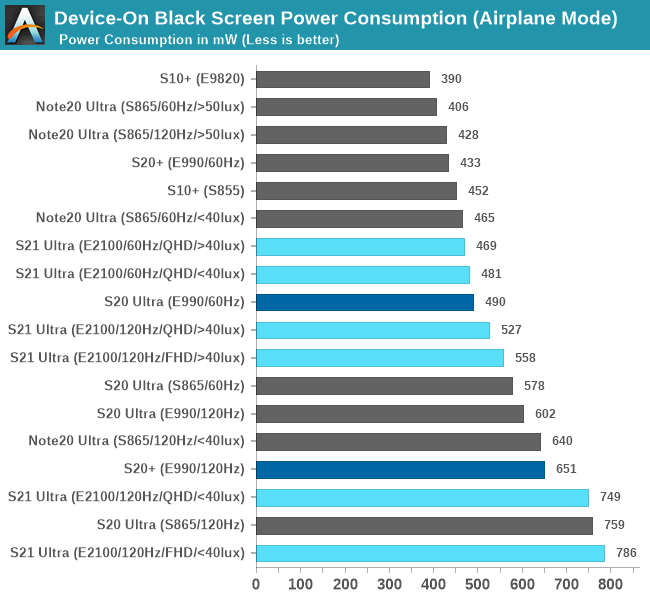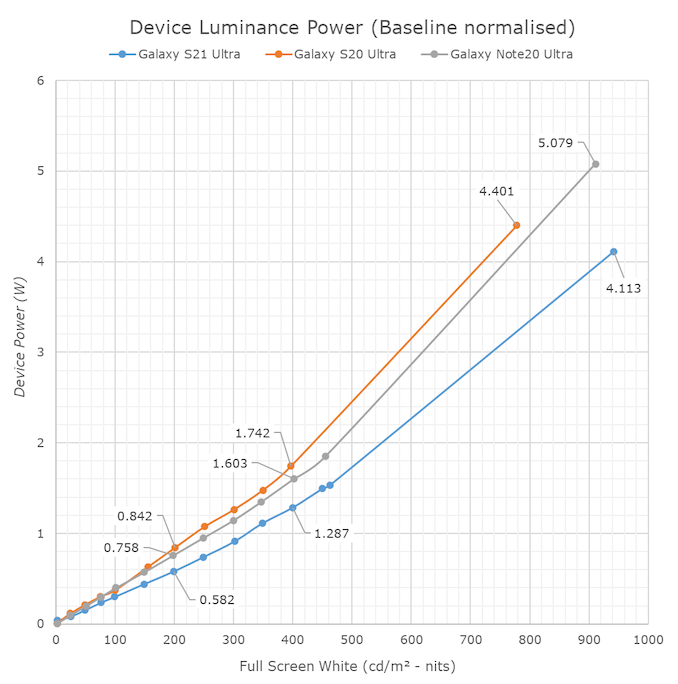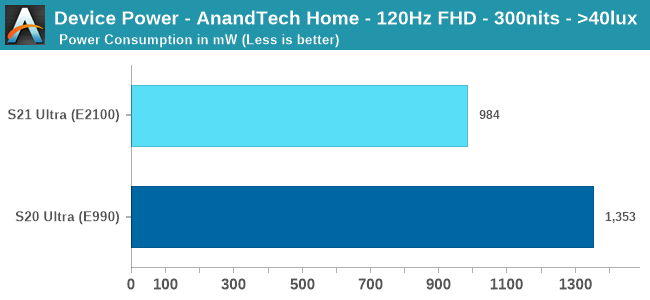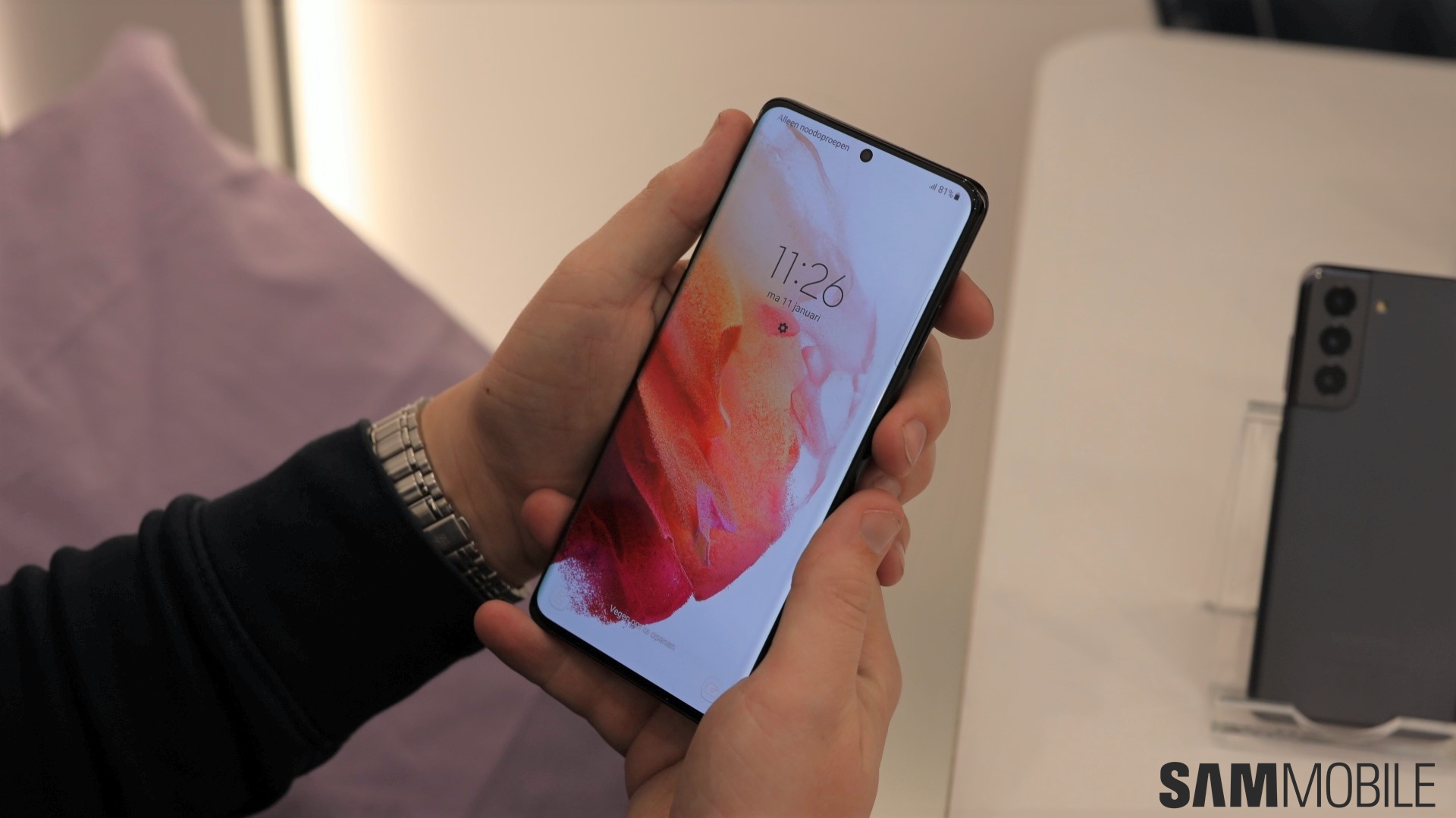All Galaxy S21 smartphones use Super AMOLED screens with a variable refresh rate of up to 120Hz. However, only the Galaxy S21 Ultra uses Samsung's latest OLED panel technology, allowing it to go as low as 10Hz and as bright as 1,500 nits. New tests have now revealed that the new OLED panel brings massive improvements in power efficiency as well.
AnandTech has published a detailed report that compares the brightness and power consumption of OLED panels used in Samsung smartphones since the Galaxy S10. The new 6.8-inch OLED panel developed by Samsung Display still uses QHD+ resolution and has a 4-lane interface. However, the company has implemented a new OLED emitter and increased the MIPI interface's clock speed, allowing the screen to offer higher brightness and variable refresh rate while consuming lower power.

As you can see in the chart above, the Galaxy S21 Ultra consumes lower power in both 60Hz and 120Hz refresh rate modes than the Galaxy S20 Ultra. However, it was also discovered that the variable refresh rate feature gets disabled when the ambient light drops below 40 lux, which ends up consuming a lot of power. Samsung should ideally remove the refresh rate limitation with respect to ambient lighting conditions.

In the second graph, you can see that the Galaxy S21 Ultra's screen can reach higher brightness levels compared to the Galaxy S20 Ultra and the Galaxy Note 20 Ultra while consuming lower power. Moreover, the power efficiency improvements are massive, up to 22% while displaying full-screen white. When calibrated to 300 nits, resolution set to Full HD+, and under bright ambient light, the Galaxy S21 Ultra's screen consumes 27% lower power than the Galaxy S20 Ultra's screen.

While Samsung didn't talk a lot about the Galaxy S21 Ultra's new Super AMOLED screen panel, it is clear that it brought a generational leap in power efficiency. No wonder Samsung's new flagship smartphone has been doing really well in battery life comparison tests all over. However, a part of the battery life improvement also comes from Samsung's new 5nm Exynos 2100 processor.







